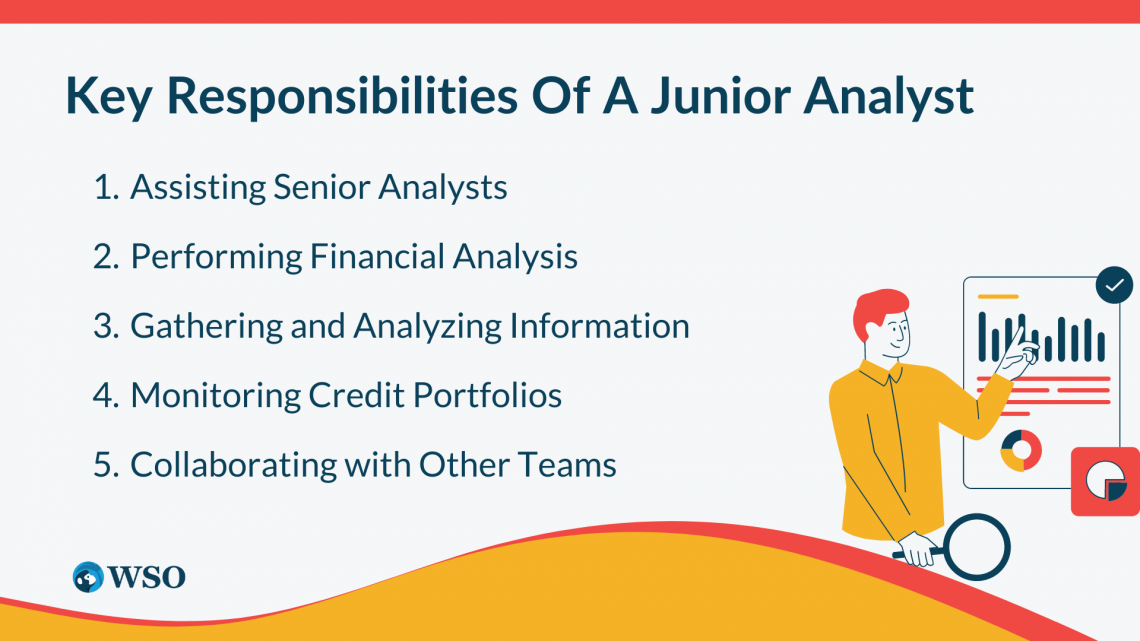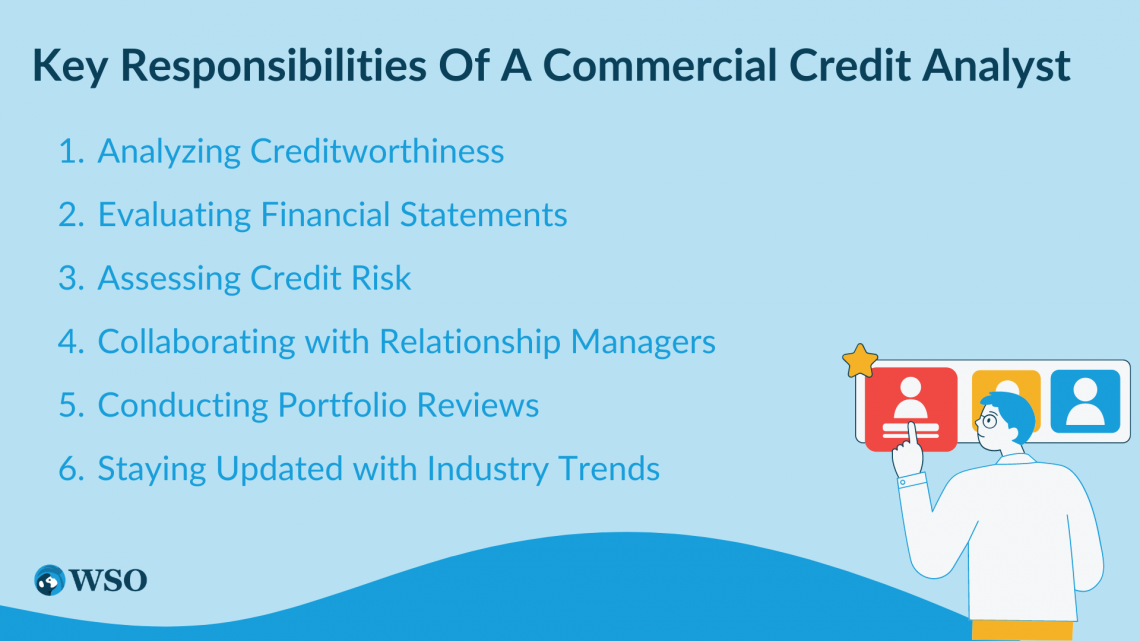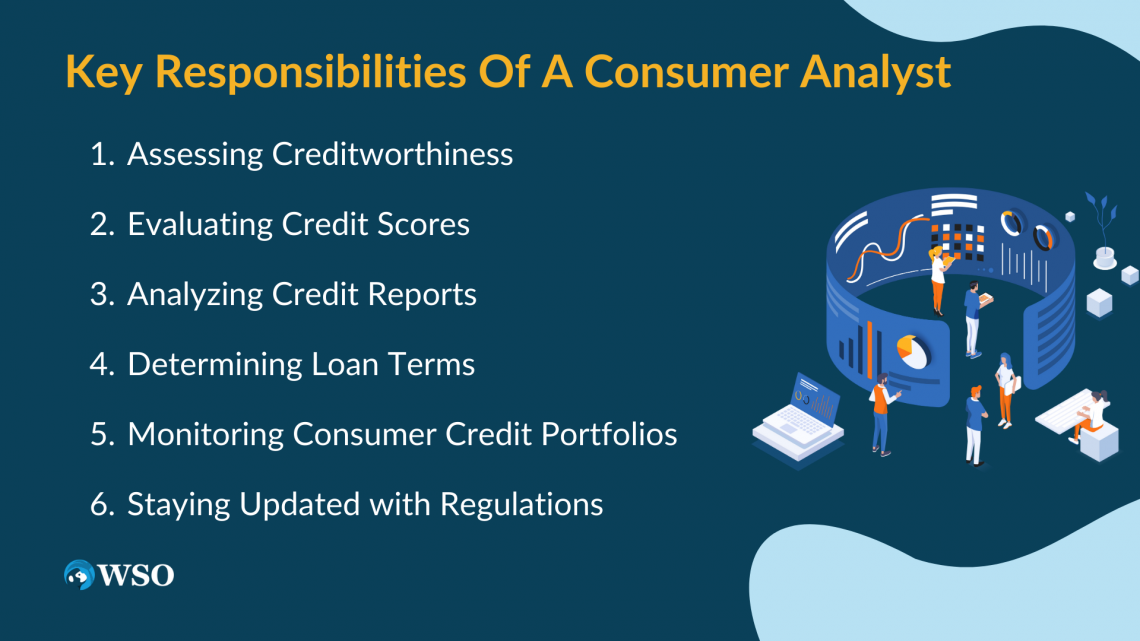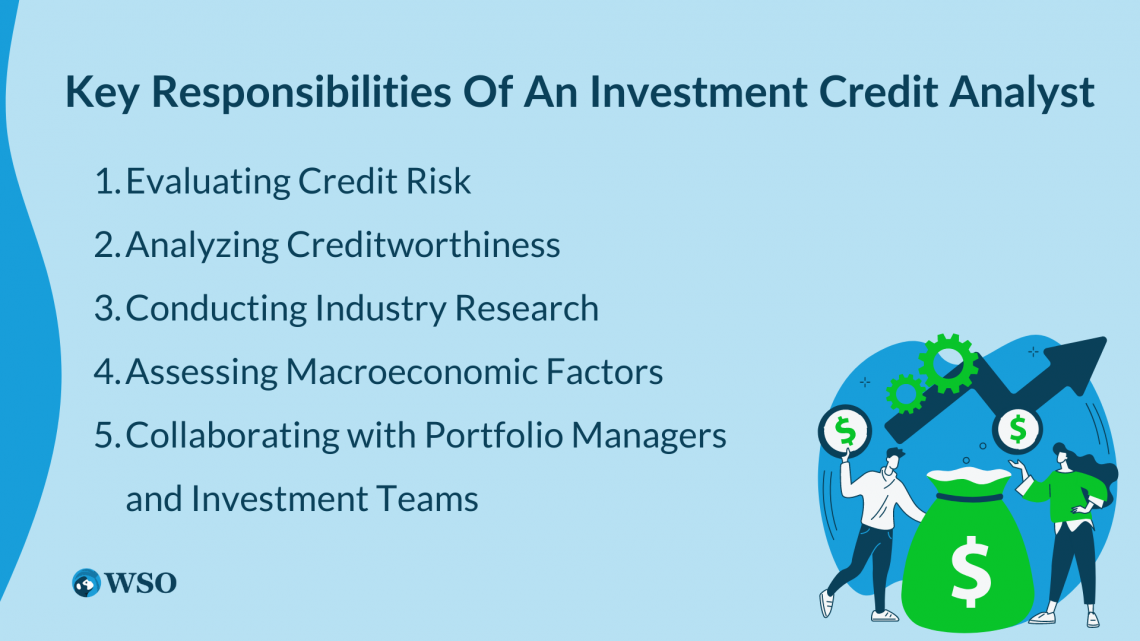Credit Analyst Positions
Credit analysts play a crucial role in evaluating credit risk(s) and assessing the creditworthiness of borrowers or organizations.
Hey there! Are you fascinated by the dynamic world of finance, where you can immerse yourself in the intricate analysis and evaluation of credit risk? Credit analysis is a dynamic and evolving field that presents promising career opportunities for finance professionals.

In today's financial landscape, credit analysts play an indispensable role in serving banks, corporations, and investment firms.
Their expertise lies in meticulously examining financial records, scrutinizing credit histories, and evaluating other pertinent factors to gauge the level of risk associated with extending credit lines.
Throughout this comprehensive article, we will be your guide, shedding light on the diverse array of credit analyst positions available to aspiring professionals.
From breaking down the various positions/options available to providing the steps needed to get there, we will help you understand the various career paths available to becoming a credit analyst.
Whether you are a recent graduate yearning for a valuable entry-level role to gain hands-on experience or an accomplished individual contemplating a career transition into a senior position, we have got you covered.
Key Takeaways
- Credit analysts play a crucial role in evaluating credit risk(s) and assessing the creditworthiness of borrowers or organizations.
- Junior credit analysts assist senior analysts to perform financial analysis, gathering information, monitor credit portfolios, and collaborate with other teams.
- Commercial credit analysts focus on evaluating the creditworthiness of commercial clients and conducting portfolio reviews.
- Consumer credit analysts assess the creditworthiness of individuals, evaluate credit scores and reports, and determine loan terms.
- Investment credit analysts analyze credit risk associated with investment opportunities, conduct industry research, and collaborate with portfolio managers.
- Risk management credit analysts assess and mitigate credit risks across the organization, monitoring credit exposures and collaborating with senior management to establish risk appetite and credit risk limits.
Junior Credit Analyst Position
A junior analyst plays a crucial role to support senior analysts and contribute to the overall credit assessment process. This entry-level position provides an excellent opportunity to gain practical experience and develop a solid foundation in credit analytics.

So let us dive deeper into the key responsibilities of a junior analyst:
1. Assisting Senior Analysts
As a fresh junior analyst, your day-to-day responsibility will be to assist senior analysts in preparing comprehensive reports and conducting credit assessments.
You will collaborate closely with them to understand the evaluation criteria and methodologies used in assessing creditworthiness.
By shadowing experienced professionals, you will learn valuable insights into analyzing credit along with its processes. This will refine and polish your analytical, communication, and presentation skills.
NOTE
You will have the opportunity to contribute to the research and analysis process, collecting and analyzing relevant financial data to support credit evaluations.
This hands-on experience will further develop your ability to identify key risk factors and make informed credit recommendations, enhancing your proficiency in credit analysis.
2. Performing Financial Analysis
Financial analysis is at the core of any credit assessment. As a junior analyst, you will be responsible for performing financial analysis to evaluate the creditworthiness of borrowers or organizations.
This involves examining financial statements, cash flow projections, and other relevant financial data. By analyzing key financial ratios, liquidity positions, and profitability markers, you contribute to assessing the borrower's ability to repay loans or meet financial obligations.
NOTE
There will be ample opportunities to familiarize yourself with credit risk models and industry tools that are constantly used to evaluate the influence of various risk metrics on creditworthiness.
Your active involvement in the financial analysis process will be instrumental in determining the overall creditworthiness of borrowers and organizations.
3. Gathering and Analyzing Information
Junior analysts gather and analyze a wide range of information to make informed credit decisions. This includes undergoing due diligence, gathering, credit reports, industry research, and other relevant data.
You will need to carefully review and extract key insights from these sources to assess the borrower's creditworthiness accurately. Attention to detail and strong analytical skills are essential in this aspect of the role.
As a junior analyst, you will actively gather and analyze a diverse range of information to make well-informed credit decisions. This involves conducting thorough due diligence, gathering credit reports, conducting industry research, and analyzing other pertinent data.
NOTE
To accurately assess the creditworthiness of borrowers, you will need to meticulously review and extract critical insights from these sources. Paying close attention to detail and possessing strong analytical skills are vital for success in this aspect of the role.
4. Monitoring Credit Portfolios
Credit portfolios need to be regularly monitored to identify potential risks and ensure ongoing credit quality, along with maintaining a balanced portfolio to avoid major exposure in one area.
Assist in monitoring credit portfolios by reviewing borrower performance, tracking repayment patterns, and identifying early warning signs of potential defaults or credit deterioration.
This proactive monitoring helps mitigate credit risks and supports informed decision-making. Furthermore, you will assist in preparing reports and presentations to communicate the portfolio's performance, risk exposure, and potential strategies for risk mitigation.
NOTE
Through your diligent efforts in monitoring and managing credit risks, you will contribute to the overall effectiveness and success of the credit analysis team.
5. Collaborating with Other Teams
Credit analysis involves cross-functional collaboration within various teams of an organization, such as underwriting and/or risk management.
Collaborating with other teams is essential to gather diverse perspectives and insights. This collaborative approach enables a more comprehensive assessment of creditworthiness and risk.
As a junior analyst, you will actively participate in team meetings, share findings, and contribute to discussions on credit analysis. Effective communication and teamwork skills are critical to successfully collaborating with colleagues from different departments.
NOTE
By fulfilling such responsibilities as a junior analyst, you lay a solid groundwork for a successful career.
Commercial Credit Analyst Position
As a commercial credit analyst, your role is to evaluate the creditworthiness of commercial clients applying for credit facilities such as. To make informed decisions, you will dive deep into their financial statements, cash flow projections, and industry trends.

Let us explore the key responsibilities of a commercial credit analyst:
1. Analyzing Creditworthiness
This analyst's job scope is to assess commercial clients' creditworthiness. This involves carefully reviewing their financial statements, including the three financial statements.
By conducting a thorough analysis of the client's financial statements, including the income statement, balance sheet, and cash flow statement, you gain insights into their revenue streams, profitability, liquidity, and debt obligations.
This assessment allows you to determine the client's ability to meet financial obligations and make informed decisions regarding creditworthiness and risk assessment.
2. Evaluating Financial Statements
Analysts closely examine financial statements provided by clients. They analyze key financial ratios, such as liquidity ratios, profitability ratios, and leverage ratios, to glean insights into the business's financial health.
NOTE
Profitability ratios, such as gross profit margin and return on investment, provide a deeper understanding of the business's profitability and efficiency.
Additionally, leverage ratios like debt-to-equity ratio and interest coverage ratio reveal the company's financial leverage and ability to meet debt obligations. These analyses aid in comprehending the overall financial health and performance of the business.
3. Assessing Credit Risk
In addition to evaluating financial statements, commercial analysts assess credit risk. They consider factors such as industry trends, market conditions, and the client's business model to understand the potential risks associated with extending credit.
By analyzing these factors, they gain insights into the potential risks involved in extending credit. This assessment allows them to make informed recommendations on credit limits and terms that are in line with the client's risk profile, ensuring a balanced approach to risk management.
4. Collaborating with Relationship Managers
Collaboration with relationship managers and sales teams is a crucial aspect of the commercial credit analyst's role. By working closely together, analysts gain a comprehensive understanding of the client's specific requirements and requests.
NOTE
This collaboration ensures that credit decisions are made in alignment with the overall business objectives and maintain strong client relationships.
The synergy between the different teams helps in providing tailored credit solutions that meet the client's needs while also considering the organization's strategic goals.
5. Conducting Portfolio Reviews
A crucial aspect of the analyst role is conducting regular reviews of existing credit portfolios. By reviewing the performance of existing credit facilities, analysts identify any signs of credit deterioration or increased risk.
Through these reviews, analysts assess the performance of existing credit portfolios and identify any indications of credit deterioration or heightened risk.
Based on their findings, analysts recommend necessary adjustments to credit limits or terms to effectively manage and mitigate potential risks, ensuring the overall health and stability of the portfolio.
6. Staying Updated with Industry Trends
Analysts stay informed about industry trends and market conditions to make accurate credit assessments. They monitor economic indicators, regulatory changes, and industry-specific developments that may impact the creditworthiness of commercial clients.
NOTE
This deep understanding enables analysts to make well-informed decisions and provide valuable recommendations.
As a commercial credit analyst, your role is pivotal in evaluating the creditworthiness of commercial clients, contributing to the overall risk management and financial stability of the organization.
Consumer Credit Analyst Position
As a consumer credit analyst, your responsibilities include assessing the creditworthiness of individuals. Let us delve into the key responsibilities of a consumer analyst:

1. Assessing Creditworthiness
Consumer analysts assess the creditworthiness of individuals by evaluating various factors such as: credit scores, income levels, debt-to-income ratios, and more.
By analyzing these indicators, consumer analysts determine the individual's ability and likelihood to repay loans or meet financial obligations. Their insights support informed decision-making in consumer lending and contribute to managing credit risk effectively.
2. Evaluating Credit Scores
When evaluating creditworthiness, analysts carefully scrutinize credit scores to gain valuable insights into an individual's credit history and financial behavior. They consider key metrics such as payment history, credit utilization, and the length of credit history.
NOTE
Higher credit scores typically suggest lower credit risk, indicating a strong track record of responsible credit management. Conversely, a low credit score may raise concerns and prompt further examination of the individual's creditworthiness before making lending decisions.
3. Analyzing Credit Reports
When analyzing creditworthiness, analysts carefully review credit reports obtained from credit bureaus. These reports contain valuable information, such as outstanding debts, payment histories, and any delinquencies or derogatory marks.
Analysts analyze this data to assess an individual's creditworthiness and to identify any potential red flags or risks associated with extending credit.
4. Determining Loan Terms
After conducting a thorough assessment, consumer analysts utilize their findings to determine suitable loan terms. This involves considering the individual's income, expenses, and creditworthiness to establish appropriate loan amounts, interest rates, and repayment terms.
NOTE
The aim is to ensure that the loan terms align with the borrower's financial capabilities, promoting responsible debt management and increasing the likelihood of successful repayment.
5. Monitoring Consumer Credit Portfolios
Monitoring consumer credit portfolios is a crucial aspect of the analyst's role. They diligently keep track of individual accounts, regularly reviewing repayment patterns, credit utilization, and other relevant factors.
Timely detection of these issues allows analysts to take appropriate actions to mitigate risks and prevent further deterioration of the portfolio. They may reach out to delinquent borrowers to understand the underlying reasons for payment difficulties and explore potential solutions.
NOTE
By actively monitoring consumer credit portfolios, analysts play a vital role in maintaining the overall credit quality and profitability of the lending institution.
Their vigilance and proactive measures contribute to minimizing potential risks and preserving the financial well-being of both the borrowers and the organization.
6. Staying Updated with Regulations
Staying updated with regulations is a critical responsibility for analysts involved in consumer lending. They must keep abreast of the ever-evolving regulatory landscape to ensure compliance with applicable laws and regulations.
This includes understanding fair lending practices, privacy laws, and industry-specific regulations that govern consumer lending activities.
NOTE
By integrating regulatory knowledge and monitoring practices, analysts can strike a balance between meeting customers' credit needs and adhering to regulatory requirements.
This approach safeguards both the interests of consumers and the lending institution, fostering trust and maintaining a strong reputation in the industry.
Investment Credit Analyst Position
As an investment credit analyst, your role revolves around evaluating the credit risk associated with investment opportunities. You focus on analyzing the creditworthiness of corporate bonds, structured products, or other investment instruments.

Let us explore the key responsibilities of an investment credit analyst:
1. Evaluating Credit Risk
The primary responsibility of this analyst is to assess potential risks associated with investment opportunities. Analyses of various metrics such as financial statements, credit ratings, and industry trends can enable you to gauge the creditworthiness and risk level of the investment.
By evaluating credit risk, investment credit analysts play a crucial role in assessing the viability and potential returns of investment opportunities.
They meticulously analyze financial statements, credit ratings, and industry trends to determine the creditworthiness and risk level of the investment.
NOTE
Through their expertise in evaluating credit risk, investment credit analysts contribute to building robust and profitable investment portfolios.
2. Analyzing Creditworthiness
Through meticulous analysis, investment credit analysts closely examine the creditworthiness of corporate bonds, structured products, and other investment instruments.
This involves assessing the financial health of the issuer, including their financial statements, cash flow projections, and credit ratings.
By evaluating the issuer's ability to meet its debt obligations, analysts provide valuable insights that inform investment decisions and help investors mitigate credit risks.
The analysis of creditworthiness is essential in assessing the potential return and risk associated with investment instruments, ultimately shaping the composition and performance of investment portfolios.
3. Conducting Industry Research
To comprehensively evaluate credit risk, investment analysts engage in extensive industry research. This involves delving into the specific sector in which the issuer operates, examining market conditions, competitive landscape, regulatory environment, and other relevant factors.
NOTE
By gaining a deep understanding of the industry dynamics, analysts can better assess the creditworthiness of the investment and anticipate potential risks and opportunities.
This research-driven approach enables analysts to make well-informed investment decisions, taking into account the broader industry context and its potential impact on the creditworthiness and performance of the investment instrument.
4. Assessing Macroeconomic Factors
In addition to evaluating industry-specific factors, investment analysts assess macroeconomic variables that can influence credit risk. Factors such as interest rates, inflation rates, and unemployment rates are taken into account during the credit risk assessment process.
By analyzing these macroeconomic indicators, analysts gain insights into the broader economic environment and potential risks that could impact the creditworthiness of investments.
NOTE
This holistic approach allows analysts to adjust their credit risk assessments accordingly, ensuring that they consider both micro and macro factors in their investment decisions.
5. Collaborating with Portfolio Managers and Investment Teams
Analysts play a crucial role in collaborating with portfolio managers and investment teams. They provide valuable insights and recommendations based on their thorough credit risk assessments.
By sharing their analysis of the creditworthiness of potential investments, analysts contribute to making informed investment decisions.
This collaboration ensures that investment strategies align with the organization's risk appetite and investment objectives, ultimately aiming to optimize portfolio performance and manage credit risk effectively.
The close partnership between analysts, portfolio managers, and investment teams creates a synergistic approach to investment management, combining expertise in credit analysis with portfolio optimization and investment decision-making.
Conclusion
Whether you are embarking on your journey as a junior analyst or setting your sights on a specialized role in risk management, a career as a credit analyst promises a dynamic and rewarding path within the finance industry.

By diligently examining financial statements, conducting thorough risk assessments, and evaluating market trends, you will contribute to informed credit decisions that directly impact financial success.
This involves honing your ability to interpret complex financial data, identify potential risks, and make well-informed recommendations. By staying updated on industry trends, regulations, and best practices, you can enhance your proficiency and add value to your role.
This broader perspective will enable you to evaluate risks and opportunities in specific industries and tailor your analyses accordingly. A career as a credit analyst offers opportunities for personal growth and professional advancement.
Building a strong foundation in financial acumen is vital. Industry knowledge is also critical for success as a credit analyst. Familiarize yourself with different sectors, economic indicators, and market dynamics.

You can position yourself as a trusted expert in your field by continually expanding your knowledge, pursuing relevant certifications, and advanced degrees, and ultimately embracing continuous learning.
From there, you can explore specialized roles in risk management, corporate lending, or even portfolio management.
Remember, the finance industry is ever-evolving, and staying ahead requires adaptability and a commitment to lifelong learning. Embrace new technologies, stay updated on emerging trends, and foster a growth mindset to successfully navigate the changing landscape of credit analysis.









or Want to Sign up with your social account?